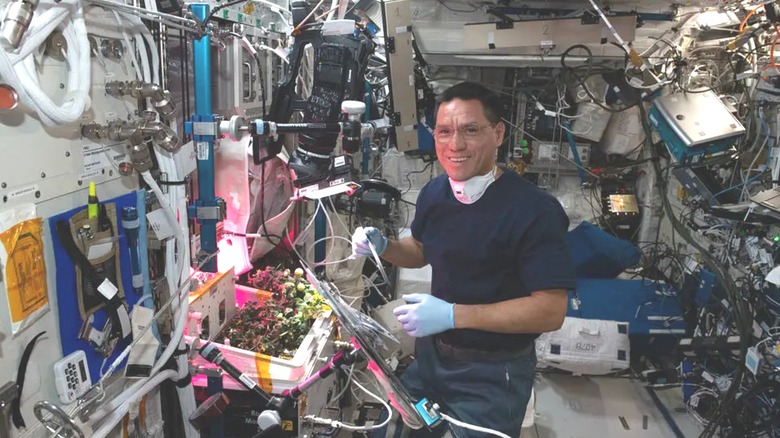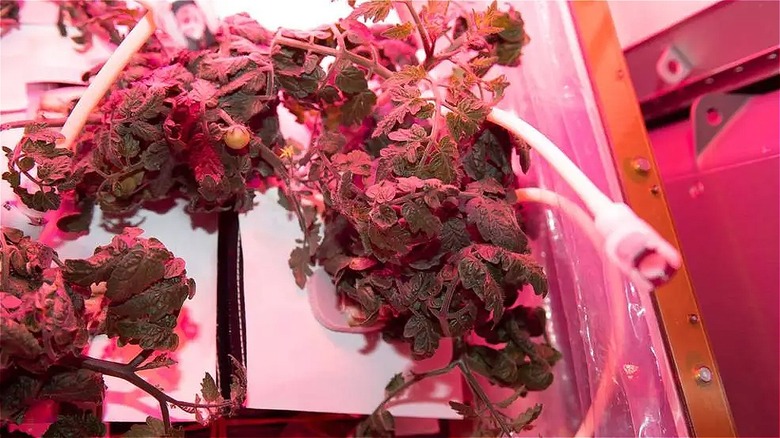Space Station Crew Proves Missing Tomato Wasn't Eaten By Astronaut
When Frank Rubio, a NASA astronaut and Expedition 68 Flight Engineer, stood accused of losing or eating a crucial component of a space-based agricultural study, it defied logic on so many levels. Why would a respected astronaut in the world's leading space exploration agency spend over a year of his life aboard the International Space Station (ISS), cultivating a crucial means for self-reliant sustenance, just to throw away his credibility on a single little tomato? Well, the world now knows the truth.
Rubio spent a U.S. record-breaking 371 days in space as part of the XROOTS space botany study, making 5,963 orbits of Earth. In March 2023, he proudly plucked the first known space-harvested tomato, only to find himself playfully accused of then eating the fruit of his labors. According to Rubio's version of the story, the tomato went missing after he allegedly placed the historic red dwarf tomato inside a bag as a show-and-tell prop for a school event. He felt sure he'd properly secured it, only to find it missing upon his return.
Many months later, with no tomato emerging to clear his name, Rubio expressed hope that somebody, someday, would find a shriveled tomato in a ziplock bag and prove that he in fact did not eat the first space tomato. Well, guess what: That finally happened.
Astronaut exonerated of tomato crime
After returning to Earth in September 2023, with the tomato assumably gone forever, the good-natured ribbing continued, and Frank Rubio stood forever accused of secretly eating a part of history. He explained the accidental loss in a NASA video released on October 13, about seven months after the incident, bemoaning the fact that "a proud moment of harvesting the first tomato in space became a self-inflicted wound of losing the first tomato in space."
With the ISS spanning the equivalent space of a six-bedroom home with a gym, living spaces, and a massive 360-degree view window, there are plenty of weightless spaces for a frisky round tomato to frolic, bounce, and hide. But miraculously, eight months after beginning its freedom fling, the tomato has resurfaced to exonerate Rubio. According to fellow astronaut Jasmin Moghbeli during a December 6 commemoration of the Space Station's 25th anniversary, the tomato has officially reappeared.
There's no word yet on whether it's shriveled or a squishy blob, or even where it finally showed itself. But it's a miracle nonetheless. The tomato and its fellow clan members, which were cultivated using soil-less hydroponic and aeroponic techniques, are part of the Veg-5 study and mission establishing agricultural production in space, supplying fresh food to future space crews aboard the ISS. The agricultural component of NASA's International Space Station also includes a program known as Tomatosphere through which students in thousands of earthly classrooms study the effects of space atmospheres on tomato seeds.

